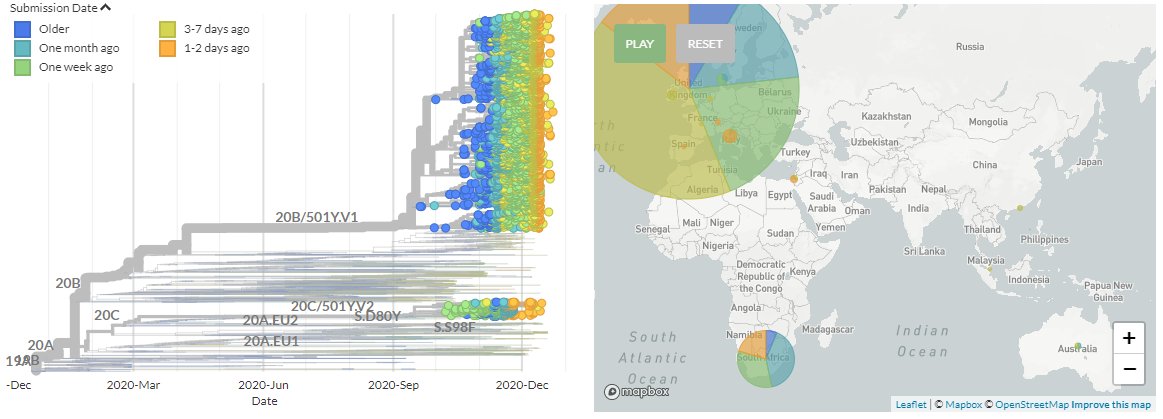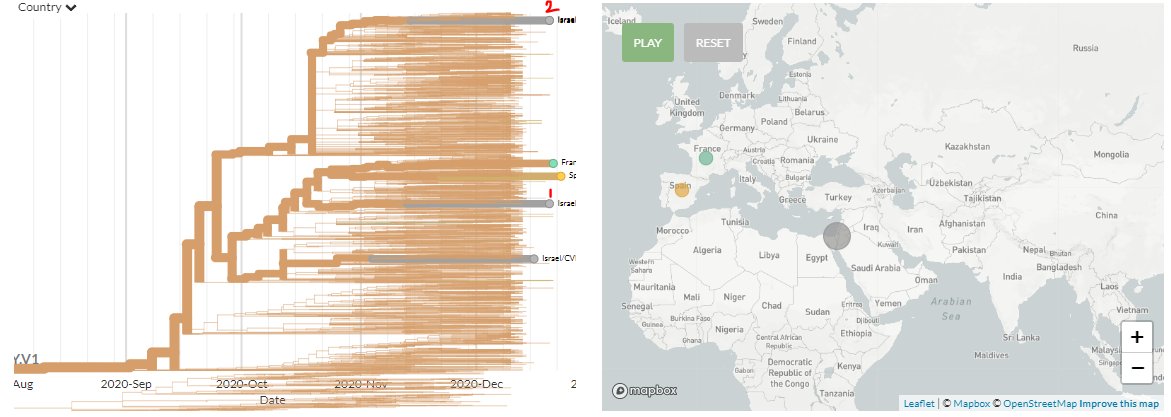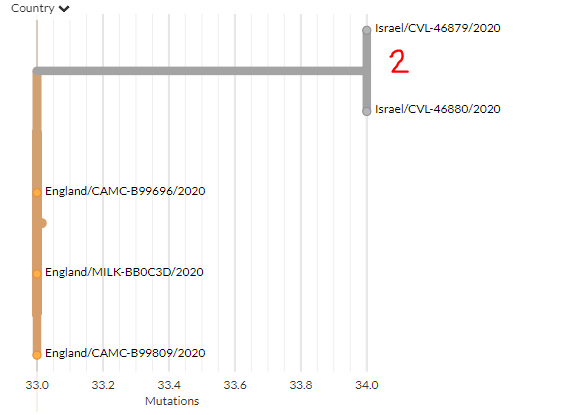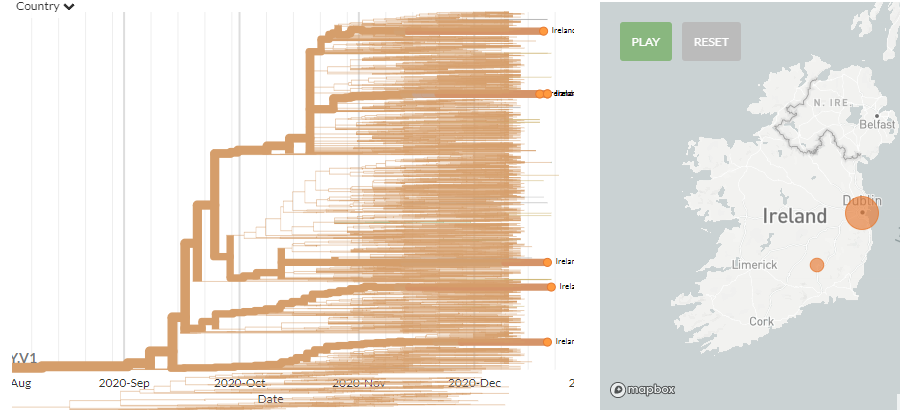
The latest focal #SARSCoV2 S:N501 build, with data from the morning of 29 Dec, is now up!
In the SE England (N501.V1 / B.1.1.7) & South African (N501.V2) variants we see new sequences from Portugal, Norway, Finland, Sweden, & South Korea.
1/8
nextstrain.org/groups/neherla…
In the SE England (N501.V1 / B.1.1.7) & South African (N501.V2) variants we see new sequences from Portugal, Norway, Finland, Sweden, & South Korea.
1/8
nextstrain.org/groups/neherla…

Within N501.V1 (SE England variant):
There is 1 sequence now from Sweden, 2 from Norway, & 2 from Finland. The 2 Finnish sequences & 2 Norwegian sequences are separated on the tree, indicating 2 separate introductions in each country.
2/8

There is 1 sequence now from Sweden, 2 from Norway, & 2 from Finland. The 2 Finnish sequences & 2 Norwegian sequences are separated on the tree, indicating 2 separate introductions in each country.
2/8


There are 3 sequences from South Korea clustering together. Zooming in (& in divergence view) we can see they are closely related, and likely indicate 1 introduction.
3/8
3/8

19 new sequences from Portugal are spread across the tree, indicating numerous introductions. While a few pairs cluster together, most seem to be independent introductions.
4/8

4/8


These samples are from Madeira, so likely indicate holiday travel, which makes it less surprising that they are then found spread throughout the tree.
However - it also indicates the numbers of introductions that can happen in a fairly short time.
5/8
However - it also indicates the numbers of introductions that can happen in a fairly short time.
5/8
https://twitter.com/borges__vitor/status/1343687295329832960
In 501Y.V2 (South African variant), there's 1 new sequence from Finland. Sitting separately from the UK and Swiss sequences, it seems likely to be an independent introduction from South Africa.
6/8
6/8

As before, there's an updated graph of variant frequency per selected countries.
As before, for most countries the expansion of S:N501 (hot pink) at the last time points reflects the selected sequencing of N501, rather than true frequency!
7/8
github.com/emmahodcroft/c…
As before, for most countries the expansion of S:N501 (hot pink) at the last time points reflects the selected sequencing of N501, rather than true frequency!
7/8
github.com/emmahodcroft/c…

As before, there's a 'N501-noUK' build in place which reduces the number of UK sequences to aid visibility!
As before - please do not use this build alone to determine connections between sequences! Lack of UK seqs may lead to spurious connections.
8/8
nextstrain.org/groups/neherla…
As before - please do not use this build alone to determine connections between sequences! Lack of UK seqs may lead to spurious connections.
8/8
nextstrain.org/groups/neherla…

• • •
Missing some Tweet in this thread? You can try to
force a refresh

















